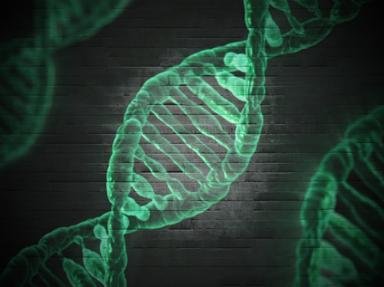Quiz Answer Key and Fun Facts
1. In order to expose DNA bases (which act as a template for DNA replication) the two strands of DNA are first separated by initiator proteins, and helicase continues to separate the strands along the length of the molecule. As separation occurs, single-stranded binding proteins attach. What is the purpose of these single-stranded proteins?
2. Single-stranded sections of DNA allow DNA polymerase III to work. What name is given to the point at which the DNA strands diverge, where polymerase activity is found?
3. Separated DNA strands have their nucleotide bases exposed, able to hydrogen bond with free nucleotides found in the cell. T nucleotides form two hydrogen bonds with A nucleotides and C nucleotides form three hydrogen bonds with G nucleotides. What type of interaction is a hydrogen bond?
4. DNA polymerase III is responsible for joining together the free nucleotides which attach to a template strand of DNA. This enzyme is restricted in that it only works in one direction, a 5' to 3' (5 prime to 3 prime) direction. What do 5' and 3' refer to in this case?
5. Several DNA monomers (known as nucleotides) are joined together by high energy phosphodiester bonds. The energy required for the formation of these bonds is provided by the degradation of a molecule made up of two inorganic phosphate groups. What is the name of this molecule?
6. Another limitation of DNA polymerase III is that it can only work if there is a pre-existing adjacent -OH group on which to add a new nucleotide (DNA monomer). These -OH groups are provided by primers. Which of the following best describes a primer?
7. Since DNA polymerase III can only work in a 5' to 3' direction, only one strand of DNA can be synthesised continuously. This is called the leading strand. The second strand is synthesised discontinuously, forming several short stretches of DNA, known as Okazaki fragments. What name is given to this second strand?
8. Primers, which aid the initiation of DNA replication, must be removed and replaced by DNA nucleotides so that the replication process can be completed. Another enzyme, DNA polymerase I, is responsible for removing primers and replacing them with DNA nucleotides. What name is given to the activity by which this enzyme removes primers?
9. The ability of DNA polymerase III to produce a perfectly complementary strand of DNA to the template strand is limited. Even this enzyme's proof-reading mechanisms are not 100% efficient. What all-important natural phenomenon does this lead to?
10. In the final stages of DNA replication, once primers have been excised and replaced with DNA nucleotides, there remains a gap (or nick) between the newly synthesised adjacent fragments. Which enzyme completes the DNA replication process by joining these nicks?
Source: Author
doublemm
This quiz was reviewed by FunTrivia editor
gtho4 before going online.
Any errors found in FunTrivia content are routinely corrected through our feedback system.
